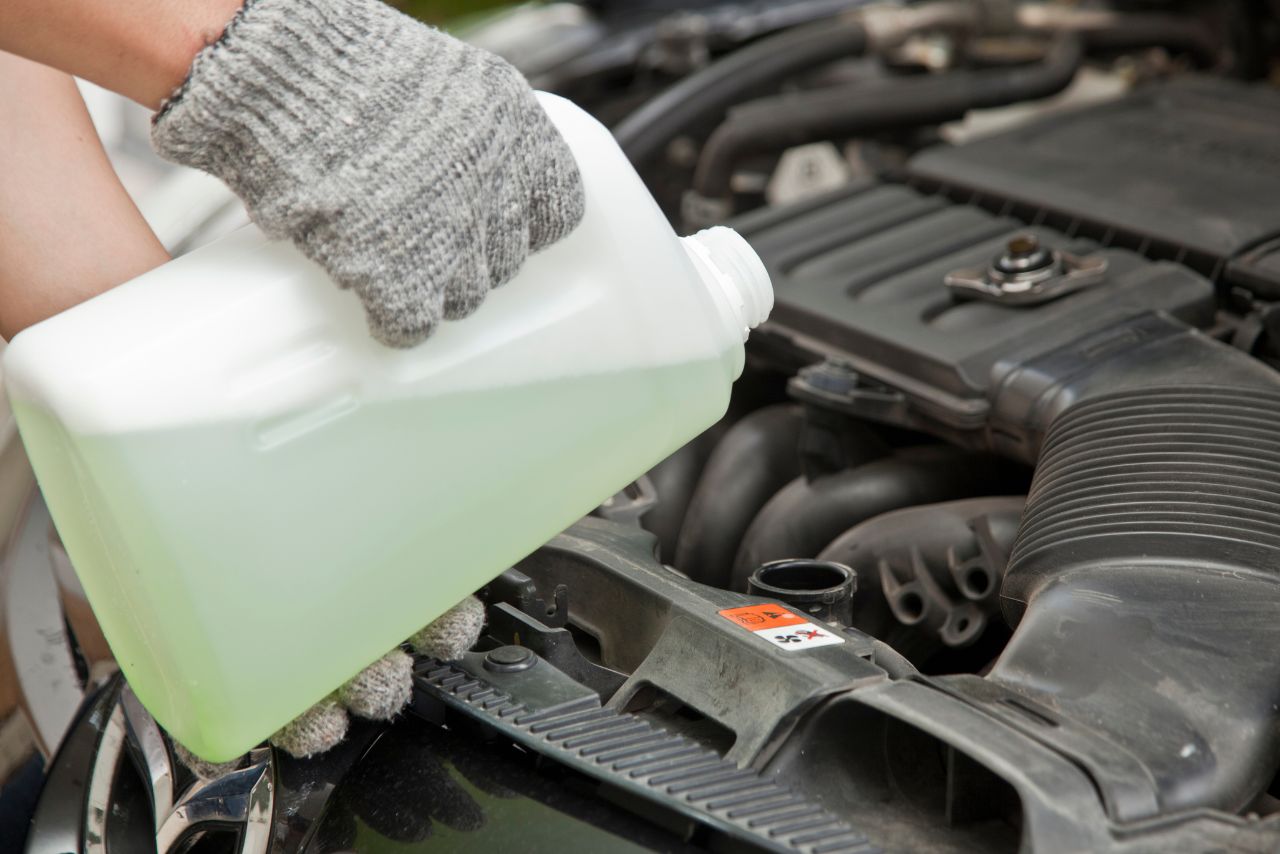As a proud owner of a Ford Fiesta, it’s important to understand the significance of engine coolant and how to properly maintain it.
Ford Fiesta Engine Coolant helps to regulate the temperature of your engine and prevent overheating, which could lead to costly repairs or even engine failure.
In this guide, we will cover everything you need to know about engine coolant for your Ford Fiesta, including the types of coolant available, how to check and top off coolant levels, and signs of coolant system issues.
By following these Ford Fiesta Engine Coolant steps, you can ensure that your Ford Fiesta’s engine stays cool and runs smoothly for years to come.
Table of contents
Why Is Engine Coolant Important for Your Ford Fiesta?
Engine coolant is crucial for the proper functioning of your Ford Fiesta. It is designed to regulate the temperature of the engine by absorbing the heat generated during combustion.
Without coolant, the engine could overheat, causing irreparable damage and potentially leading to a breakdown. Coolant also prevents corrosion and rust from forming in the engine, which can cause leaks and other problems down the line.
It also helps to keep the engine lubricated, reducing friction and wear on critical components. To ensure your Fiesta’s engine stays in top condition, it is important to check the coolant level regularly and top it up as needed.
It is also important to have the coolant system flushed and refilled according to the manufacturer’s recommended schedule.
In short, engine coolant is a vital part of your Ford Fiesta’s maintenance, and neglecting it could lead to costly repairs and a shortened lifespan for your vehicle.
Ford Fiesta Engine Coolant Location:
If you’re looking for the coolant location in your Ford Fiesta, it’s important to first locate the engine coolant reservoir. In most models, the coolant reservoir is located near the front of the engine compartment on the passenger side.
To access it, you’ll need to pop open the hood of your car and look for a plastic container with a cap that says “engine coolant.” Once you’ve found it, you can easily check the coolant level by removing the cap and inspecting the fluid level.
If the level is low, you can add more coolant by pouring it into the reservoir until it reaches the “max” line.
It’s important to use the correct type of coolant for your Ford Fiesta, which can be found in your owner’s manual or by consulting with a certified mechanic.
Regularly checking and maintaining your coolant level is an important part of keeping your engine running smoothly and preventing overheating.
How Often Should You Change Your Ford Fiesta’s Engine Coolant?

If you own a Ford Fiesta, you might be wondering how often you should change the engine coolant. The answer to this question is crucial to maintaining your car’s performance and preventing costly repairs.
According to ford officials, Generally, it is recommended that you change your engine coolant every 125,000 miles miles or every 10 years, whichever comes first.
However, this may vary depending on your car’s specific make and model, as well as your driving habits and the conditions in which you operate your vehicle.
It is important to follow your Ford Fiesta’s owner’s manual for recommended maintenance schedules and guidelines.
Neglecting to change your engine coolant can lead to a buildup of rust and corrosion in your car’s cooling system, which can cause leaks, overheating, and even engine failure.
So, be sure to keep up with your car’s maintenance and change your engine coolant as needed to keep your Ford Fiesta running smoothly.
How Much Coolant Does a Fiesta Need?
| Model | Engine | Coolant Capacity (liters) |
|---|---|---|
| Fiesta 1.0 EcoBoost | 1.0L EcoBoost | 4.5 |
| Fiesta 1.25 Duratec | 1.25L Duratec | 4.5 |
| Fiesta 1.4 TDCi | 1.4L TDCi | 5.5 |
| Fiesta 1.6 TDCi | 1.6L TDCi | 6 |
If you own a Ford Fiesta, it’s important to know how much coolant your vehicle needs to function properly. The amount of coolant required by your vehicle will depend on several factors, including the size of your engine and the model year of your car.
To find out the exact amount of coolant required for your Fiesta, refer to your owner’s manual or contact your local Ford dealer.
Generally, most Ford Fiestas require around two to three gallons of coolant. However, it’s important to note that overfilling your coolant can be just as harmful as not having enough.
If you’re unsure about how much coolant your Fiesta needs, seek advice from a professional mechanic or dealership. Properly maintaining your coolant levels can help ensure that your engine runs smoothly and efficiently for years to come.
Can Car Air Filters Be Cleaned and Reused? (We Tried it Out!)
How to Check Your Ford Fiesta Engine Coolant Level?
To ensure your Ford Fiesta’s engine runs smoothly, it is important to regularly check the engine coolant level.
To get started, locate the coolant reservoir under the hood. It is typically a clear or opaque plastic tank with a cap labeled “coolant.” Before removing the cap, make sure the engine is cool to avoid burns or injuries.
Next, inspect the coolant level by looking at the markings on the side of the reservoir. If the level is below the “minimum” mark, add the appropriate coolant mix to the reservoir until it reaches the “maximum” mark.
It is recommended to use a 50/50 mix of coolant and water for optimal performance. Finally, replace the cap securely and start the engine to ensure proper circulation.
Regularly checking the engine coolant level will prevent overheating and costly repairs, ensuring a longer lifespan for your vehicle.
How to Add Engine Coolant to Your Ford Fiesta?
If you’re a Ford Fiesta owner, it’s important to know how to add engine coolant to your car. This task is fairly simple and can be done in a few easy steps.
- First, ensure that your car is completely cool before adding coolant.
- Locate the coolant reservoir, which is usually a transparent plastic container near the radiator.
- Remove the cap and check the coolant level. If it’s low, add the appropriate coolant to the reservoir. Be sure to use the correct type of coolant for your car, as specified in the owner’s manual.
- Fill the reservoir to the appropriate level, but don’t overfill it.
- Replace the cap securely and wipe up any spilled coolant.
- Finally, start your car and let it run for a few minutes while monitoring the temperature gauge to make sure the coolant is circulating properly.
By following these simple steps, you can easily add engine coolant to your Ford Fiesta and keep it running smoothly.
Can You Change Oil Filter Without Changing Oil? (REVEALED!)
What Type of Engine Coolant Should You Use for Your Ford Fiesta?
If you own a Ford Fiesta, it’s crucial to use the right type of engine coolant to maintain the vehicle’s optimal performance.
The recommended coolant for this car is the Motorcraft® Premium Gold Engine Coolant, which is a high-quality coolant designed specifically for Ford vehicles.
This coolant is a hybrid organic acid technology (HOAT) formula that is compatible with both aluminum and copper radiators, and it provides exceptional protection against corrosion and overheating.
It meets Ford’s specifications for use in all of their vehicles and is recommended for use in all Ford Fiestas.
It’s important to note that using the wrong type of coolant can cause serious damage to your engine and lead to costly repairs. Be sure to check your owner’s manual or consult with a Ford technician to ensure you are using the correct coolant for your vehicle.
Modern Ford Fiestas will now require the use of a pink OAT coolant. This type of coolant has been specifically formulated to meet the requirements of newer Ford engines. It is important to follow the instructions provided by Ford to ensure the proper maintenance of your vehicle and avoid potential damage to the engine.
Is it OK to mix coolant?
It is never a good idea to mix different types of coolant in your vehicle’s cooling system. Doing so can cause serious damage to your engine and result in costly repairs.
Coolants are designed to provide specific benefits and mixing them can disrupt their effectiveness. For example, some coolants are designed to be compatible with aluminum engines while others are not.
Mixing incompatible coolants can cause corrosion, which can lead to leaks and engine damage.
Additionally, some coolants are designed to work in specific temperature ranges, and mixing them can cause them to become less effective at regulating engine temperatures.
To ensure the longevity and reliability of your vehicle’s engine, it is best to follow the manufacturer’s recommendations for coolant type and avoid mixing different types of coolant.
If you are unsure which coolant to use, consult your vehicle’s owner manual or a trusted mechanic for guidance.
Can I Use Water Instead of Coolant?
If you are wondering whether you can use water instead of coolant in your vehicle, the answer is yes, but with some important caveats. Water is an effective conductor of heat and can help keep your engine cool.
However, using water alone can cause corrosion in your engine and damage the seals and gaskets. Coolant, on the other hand, contains rust inhibitors and other additives that prevent damage to your engine.
It also has a higher boiling point than water, which means it can continue to perform even in extreme temperatures. If you must use water, it is crucial to mix it with coolant at the recommended ratio for your vehicle.
This will help ensure your engine stays protected and performs optimally. Always refer to your vehicle’s owner manual or consult a professional mechanic for guidance on the best coolant for your specific make and model.
Using water instead of coolant is beneficial for checking potential leaks during a Fiesta water pump replacement and as a temporary solution for coolant leaks while driving. However, proper coolant should still be used once the cooling system is repaired.
What to Do if Your Ford Fiesta Overheats?
If you find yourself in a situation where your Ford Fiesta overheats, the first thing you should do is pull over to a safe location and turn off the engine.
It’s important to never attempt to unscrew the radiator cap or touch any of the engine components while they are still hot. Wait for the engine to cool down completely before attempting to check the coolant level.
If the coolant level is low, add more coolant to the reservoir or radiator. Keep in mind that mixing different types of coolant can cause damage to the engine, so always use the same type of coolant that is currently in the system.
If the coolant level is not the issue, it’s possible that there is a leak in the cooling system or a malfunctioning thermostat. In this case, it’s best to have your vehicle inspected by a professional mechanic to prevent any further damage.
Can You Mix Old and New Coolant?
It’s generally okay to mix old and new coolant in a Ford Fiesta if the old coolant is not past its lifespan of 75k-100k miles. However, if the coolant appears rusty brown, it’s recommended to drain and refill instead of just topping it up.
Also, keep in mind that different coolants have different lifespans, and mixing old and new coolant can disrupt the effectiveness of the new coolant.
If you’re unsure about how to properly add or change your vehicle’s coolant, it’s best to consult a trusted mechanic for guidance.
Proper maintenance of your Ford Fiesta’s cooling system is crucial for the longevity and reliability of your engine.
Always follow Ford’s recommendations for coolant type and usage, and never hesitate to seek professional help if you encounter any issues with your vehicle’s cooling system.
Can I Drive with Low Coolant?
It is strongly advised not to drive with low coolant as it can cause severe damage to your engine and lead to costly repairs.
Coolant, also known as antifreeze, is responsible for regulating the temperature of your engine and preventing it from overheating.
When the coolant level drops below the recommended level, your engine may start to overheat, causing damage to the engine block, cylinder heads, and other critical components.
In addition, low coolant levels can also cause corrosion and rust within the engine, leading to leaks and coolant contamination. If you notice that your coolant level is low, it’s important to add more coolant as soon as possible.
However, if you continue to drive with low coolant, you risk damaging your engine, which can result in expensive repairs or even the need for a complete engine replacement.
Conclusion and final thoughts 💭
Taking proper care of your Ford Fiesta’s cooling system is essential for ensuring its longevity and optimal performance.
Always use the recommended coolant type and avoid mixing different types of coolant, as this can cause damage to the engine.
If you must use water instead of coolant, make sure to mix it with the appropriate amount of coolant and use it only as a temporary solution.
Regularly checking your vehicle’s coolant level and having it inspected by a professional mechanic can help prevent potential issues before they become costly problems.
In case of an overheating situation, always stop in a safe location, let the engine cool down completely, and add more coolant if needed.
Following these guidelines will help ensure that your Ford Fiesta’s engine stays protected and performs at its best for many years to come.
Latest Posts:
- Can WD-40 Remove Scratches on Cars? (Hint: Yes, but…)
- Can You Use a Drill to Polish Your Car? (We Tried it Out!)
- Should You Cover Car Scratches With Stickers? (REVEALED!)
- Buick Service Stabilitrak: (Causes & 100% Guaranteed Fix!)
- Common Holden Trax Problems (Causes & 100% Proven Fixes!)
- Jeep Commander Transmission Over Temp: (Guaranteed Fix!)












Leave a Reply